Why you can trust Tom's Hardware
To read about our monitor tests in-depth, please check out Display Testing Explained: How We Test PC Monitors. We cover brightness and contrast testing on page two.
Uncalibrated – Maximum Backlight Level
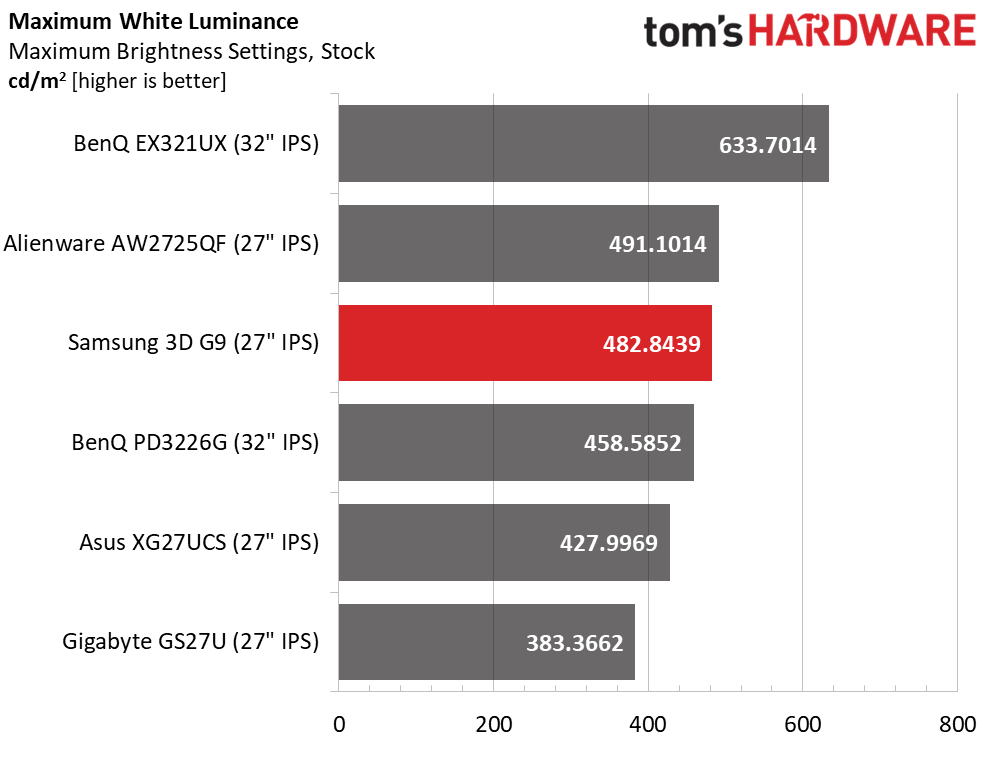
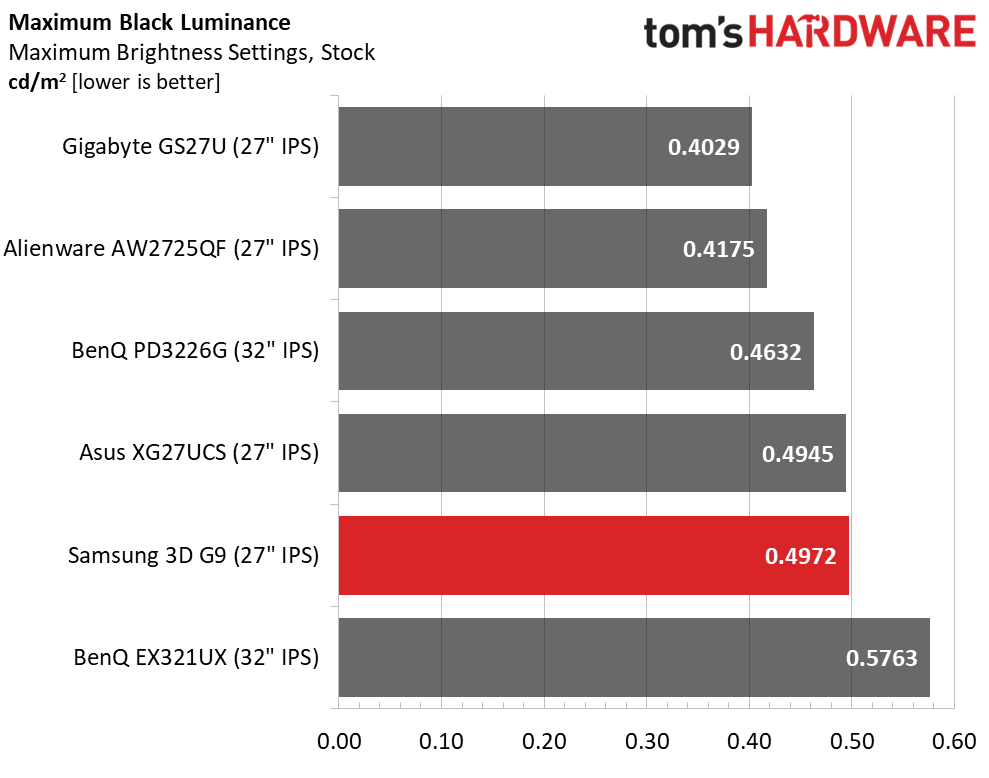
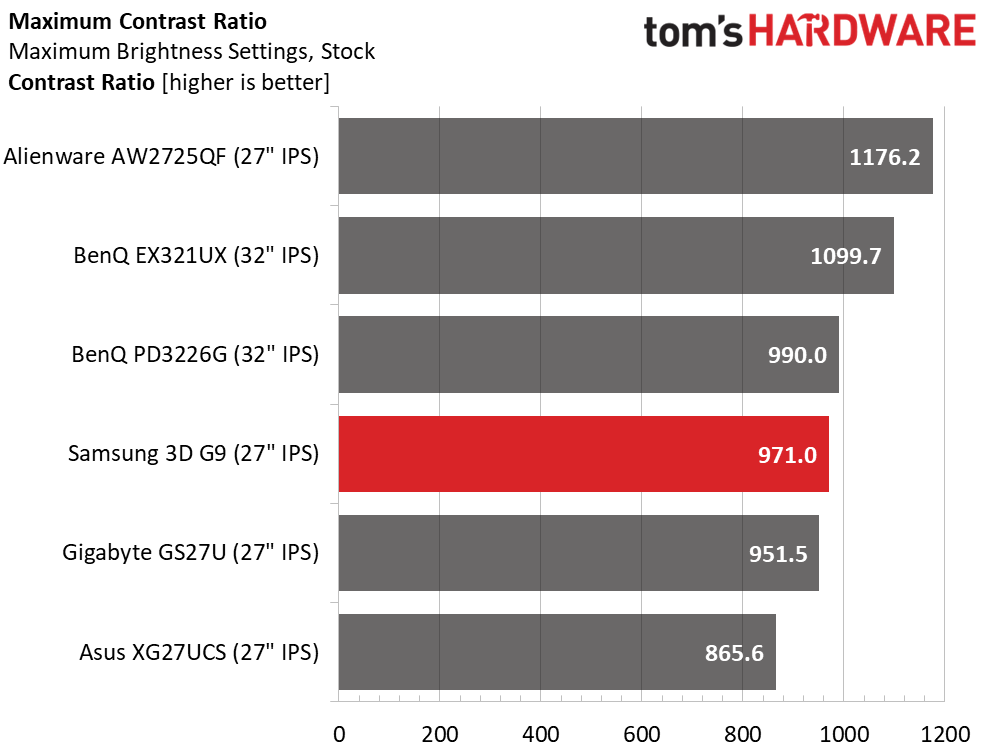
I ran my SDR luminance tests with dimming turned off to assess the 3D G9’s native performance. It’s very bright with over 480 nits peak for a full white field. You can use the dimming here to increase a 25% window’s brightness to around 520 nits, but the full field number doesn’t change. Black levels are average for IPS and result in a native contrast ratio of 971:1. Turning dimming to high raises this to 2,600:1.
After Calibration to 200 nits

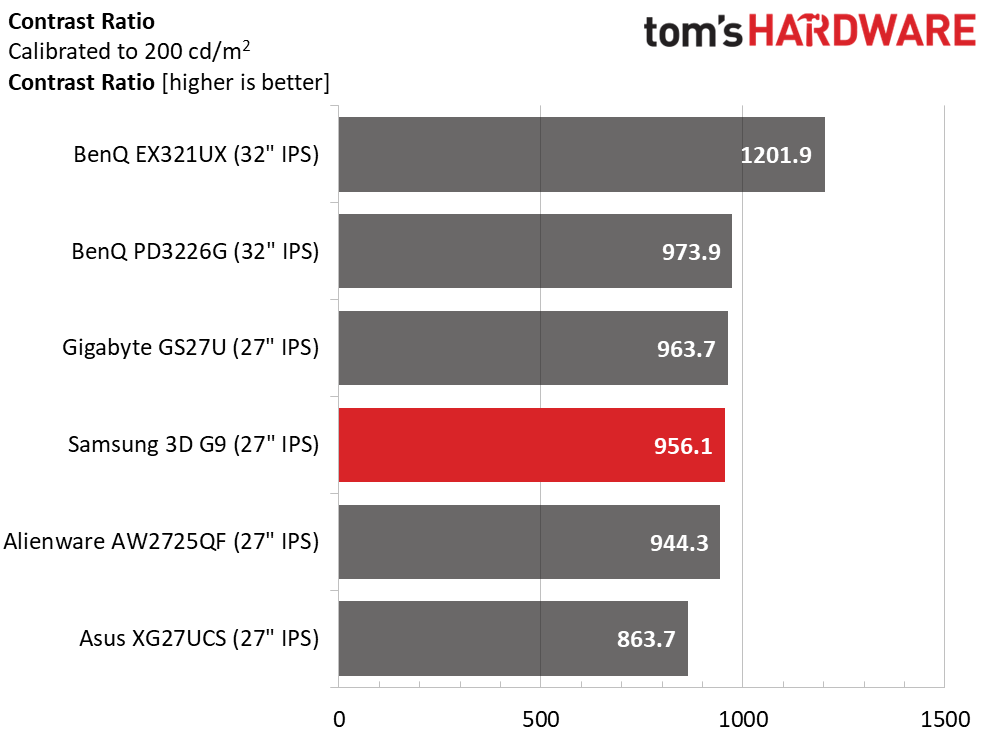
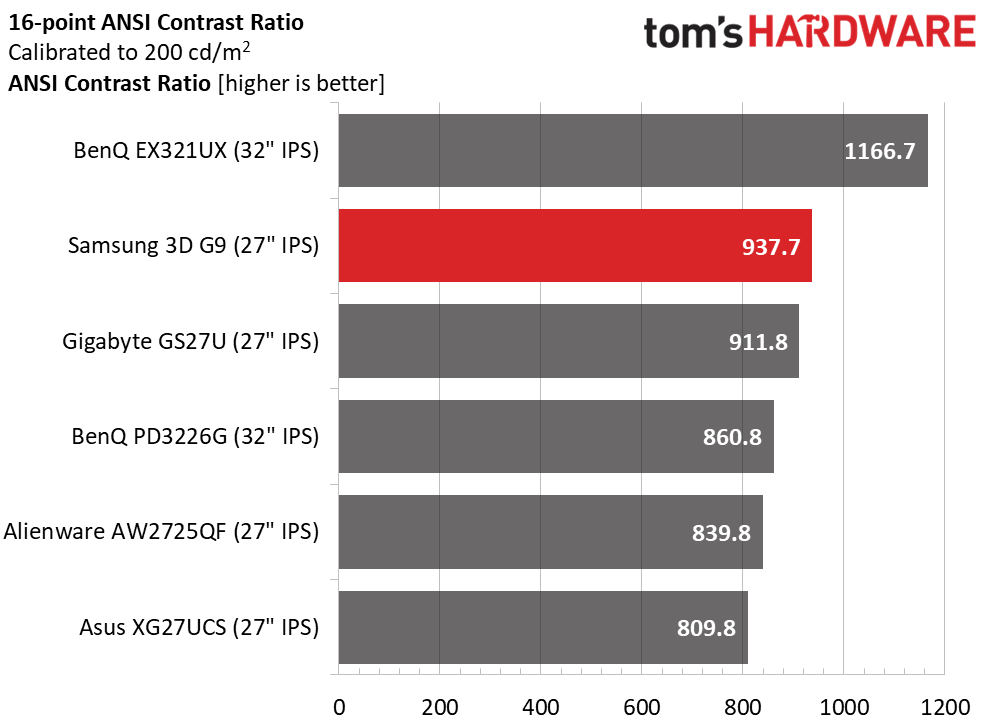
Calibration lowers the value slightly, but you’ll be hard pressed to see a visible difference. 956:1 is slightly below my IPS benchmark value of 1,000:1, but you can achieve up to 2,600:1 by utilizing the dimming feature. It has no downsides and is something you won’t often find outside of full-array backlight technology, such as Mini LED.
The ANSI test shows consistent performance with the 3D G9 coming in at 937.7:1. It isn’t quite enough for first place, but it is the best of the rest. This is decent performance.
Test Takeaway: The 3D G9 has average-for-IPS contrast at just under 1,000:1 in all tests. It stands apart from many others by offering dimming for both SDR and HDR, which improves it to 2,600:1 without clipping highlight or shadow detail.
MORE: Best Gaming Monitors
MORE: How We Test PC Monitors
Get Tom's Hardware's best news and in-depth reviews, straight to your inbox.
MORE: How to Buy a PC Monitor
Current page: Brightness and Contrast
Prev Page Response, Input Lag, Viewing Angles and Uniformity Next Page Grayscale, Gamma and Color
Christian Eberle is a Contributing Editor for Tom's Hardware US. He's a veteran reviewer of A/V equipment, specializing in monitors. Christian began his obsession with tech when he built his first PC in 1991, a 286 running DOS 3.0 at a blazing 12MHz. In 2006, he undertook training from the Imaging Science Foundation in video calibration and testing and thus started a passion for precise imaging that persists to this day. He is also a professional musician with a degree from the New England Conservatory as a classical bassoonist which he used to good effect as a performer with the West Point Army Band from 1987 to 2013. He enjoys watching movies and listening to high-end audio in his custom-built home theater and can be seen riding trails near his home on a race-ready ICE VTX recumbent trike. Christian enjoys the endless summer in Florida where he lives with his wife and Chihuahua and plays with orchestras around the state.
-
Fox Tread33 June 17, 2025 - I've purchased "cutting edge" devices in the past. Back in the 1970's I purchased very expensive Quadraphonic Stereo equipment and within months it was killed by less expensive surround sound stereo systems. A few decades later, I saw a controller that had haptic feedback and a unique design at a Tech show in New York City. I bought one... The demo disc that came with the device showed everything it could do. However, just like the Logitech "Force Feedback" joystick I purchased. No game developers designed any games or programs that gave functionality to those devices. It all depends on whether there are programs and games designed to use these devices. Samsung 3D monitor, great, but how many games will be designed to be used with it. In my opinion, there has to be an industry wide desire to advance any of these technologies. Otherwise, an individual company producing a niche device will never sell to a lot of people, and those who buy it. Will experience the same "early adopter" disappointment that I've experienced and mentioned here.Reply
